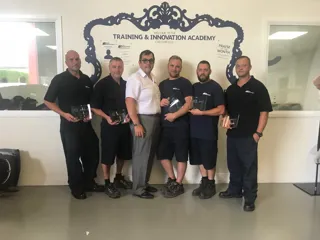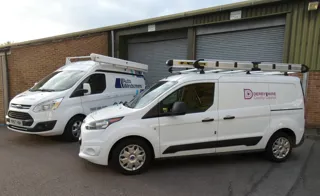By Rupert Armitage, managing director, Auto Windscreens
At the end of September I was lucky enough to travel across the pond to speak at Auto Glass Week on the topic of recalibrating Advanced Driver Assistance Systems (ADAS). Like in the UK, our American vehicle glass repair counterparts are in the midst of a confusing time where many aren’t sure how to navigate the murky waters of ADAS and tackle calibration, the newest part of the windscreen repair journey.
Much like in the UK two years ago, a very small percentage of cars have ADAS in the U.S. but the number is growing rapidly. Yet many VM dealers aren’t currently equipped to handle this rise, not having the necessary recalibration tooling and, whilst this must change, it means repairers have little choice but to use aftermarket solutions at present, with four major aftermarket calibration tools dominating the marketplace. There is virtually no collaboration with VMs like we have successfully developed over here, although this is something they seem keen to explore, albeit through a different approach owing to the sheer vastness of the country.
Cost a concern
It was clear that vehicle glass repairers generally have the same ADAS concerns as we do around handling new vehicle technology, guaranteeing safety and managing costs for the service. With many investing in aftermarket solutions, the need to secure a solid return on investment is a high priority but this isn’t necessarily proving easy as repairers face ongoing financial outlays to keep up with new technologies and are increasingly finding resistance from insurers reluctant to pay for recalibration. One person I spoke to remarked that his business’ debt has risen by 300% as a result of insurance companies refusing to cover recalibration costs. This to me is madness; surely insurers have a responsibility to leave drivers in cars that fully function but this can’t be guaranteed if recalibration is not part of the process!
Many U.S. car owners actually bypass insurers altogether for screen replacements, with excesses in the region of $500 pushing them to pay repairers directly out of their own pockets. But with education around ADAS limited when buying a car, it’s fair to argue that it’s unlikely that such customers will know what technologies feature on their vehicles and if calibration is needed. This is where they are fully reliant on their bodyshop, dealer or glass provider to provide the correct advice.
Taking advantage of the new additional service, some repairers seemed eager to boast of how much they’re earning from recalibration, seeing it as a cash cow and focussed more on profit than safety. My advice was to save every dollar as a liability case could clear them out if correct VM procedures aren’t being followed.
Legislation and the future
You can’t realistically compare their ADAS market to ours directly. We’re only the size of Michigan and, while we still have no national legislation, I believe this is on the cards. Being such a vast country, stateside repairers have the added challenge of state legislations, which are preventative to a national recalibration approach. And, given that there are 1,000s of independents I think it would be tremendously difficult to find a nationally adopted solution. Any legislation they do have currently relates to use of OEM parts, but is not specific to glass. Obviously though, the use of OEM glass as vital in ADAS vehicles has been well documented by VMs globally.
It will be interesting to see how everything develops but what is apparent in my opinion is that the one-stop-shop, one size fits all approach that immediately grabbed people’s attention a few years ago is increasingly being questioned. The investments in equipment are high for smaller repairers, who then face paying premium non-negotiated dealership fees when their tooling and software are not capable of successfully recalibrating new marques, technologies or specific vehicle makes. If a vehicle isn’t able to communicate properly with unsuitable systems, recalibration just won’t work. It’d be like trying to turn on your TV with your DVD remote!
Repairers are essentially looking for a sustainable recalibration solution. They want to future-proof and, with approximately 49% of new cars now having ADAS, this part of automotive glazing repairs is only going to get bigger. It’s by no means an easy task but it’s an ugly one that has to be dealt with by us all, in the UK and U.S, to remain successful and keep customers in vehicles that won’t cause them harm!




















Login to comment
Comments
No comments have been made yet.